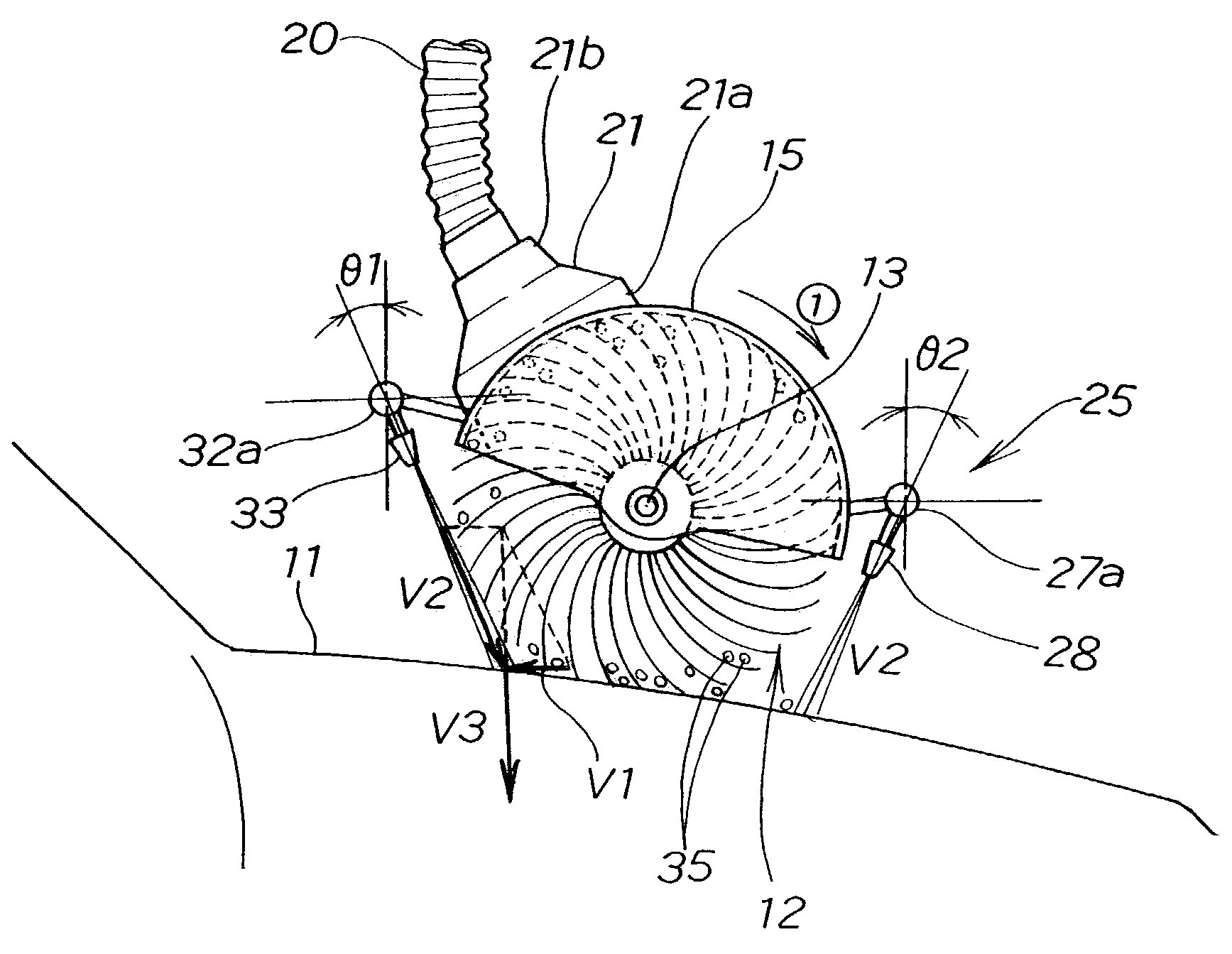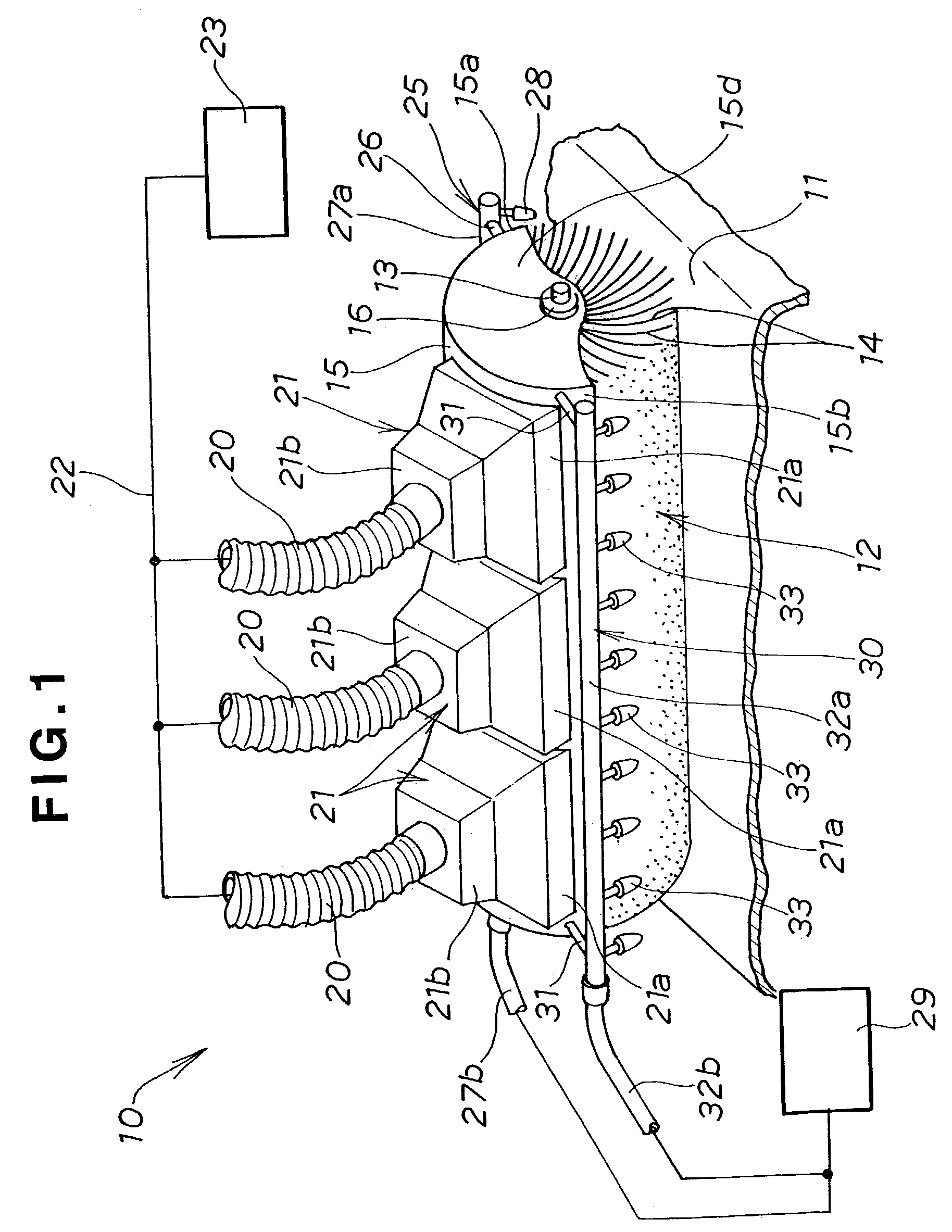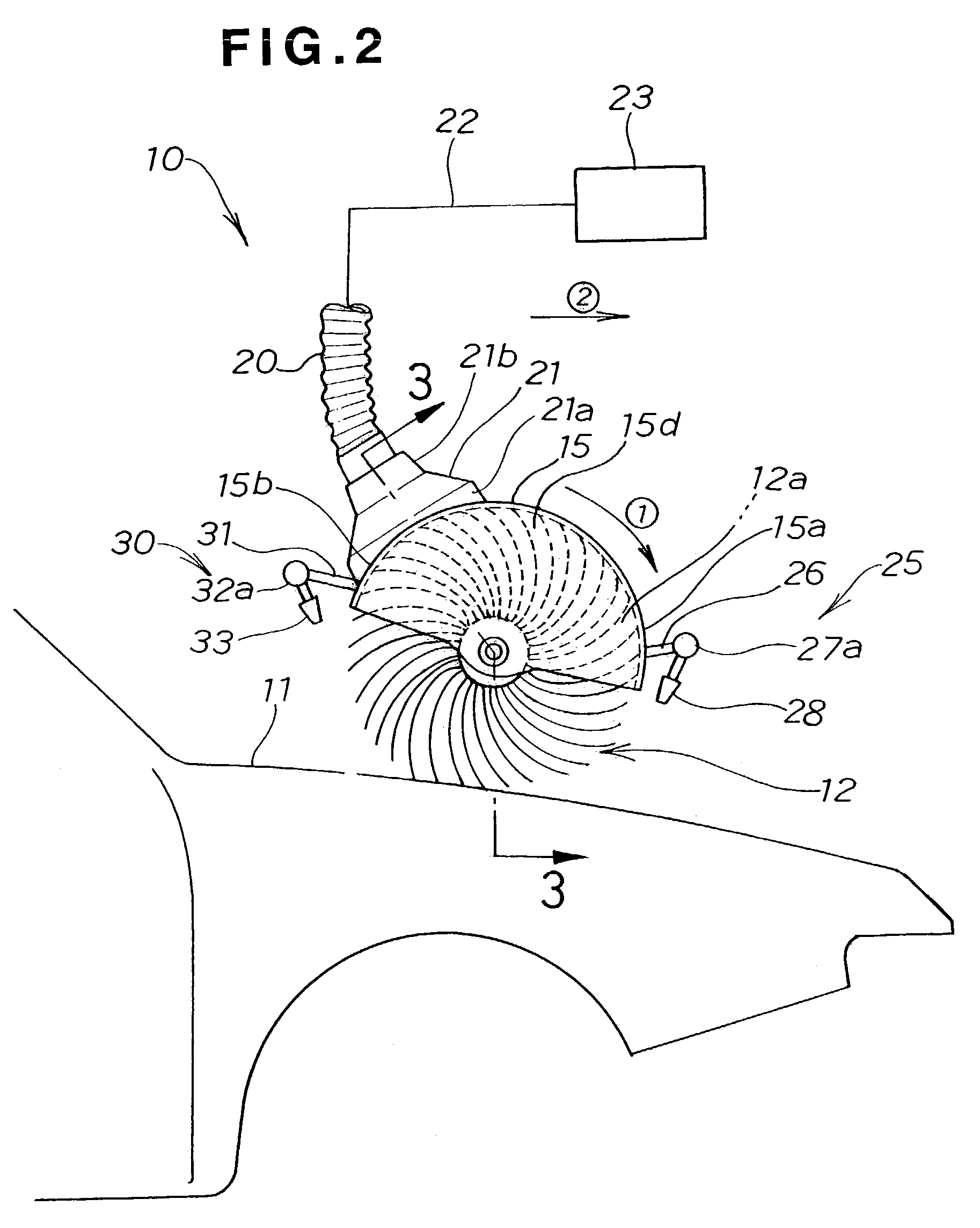Dust removal apparatus
a technology of dust removal apparatus and dust removal surface, which is applied in the direction of cleaning equipment, brushes, coatings, etc., can solve the problems of increasing the cost unsatisfactory painting defects, and reducing the service life of the removal apparatus, so as to prevent undesired scattering of dust particles, effectively block the wind produced by the rotation, and efficiently remove the workpiece surface
- Summary
- Abstract
- Description
- Claims
- Application Information
AI Technical Summary
Benefits of technology
Problems solved by technology
Method used
Image
Examples
Embodiment Construction
[0036]FIG. 1 is a perspective view of a dust removal apparatus in accordance with an embodiment of the present invention, and FIG. 2 is a side view of the dust removal apparatus of FIG. 1.
[0037]The dust removal apparatus 10 includes a rotary brush 12 mounted on and along a rotation shaft or hub 13 extending generally parallel to a surface 11 of a workpiece; the rotary brush 12 has a generally cylindrical contour extending perpendicularly to a front-and-rear direction of the apparatus 10. As will be described, the rotary brush 12 is movable in the front-and-rear direction. Upper half portion 12a of the rotary brush 12 is covered with a hood 15 of a semicylindrical shape defining a predetermined dust removing space. The hood 15 has a pair of opposed side surfaces each having a semicircular shape, and linear front and rear end edges 15a and 15b. A plurality of exhaust ducts 20 are connected to the hood 15 in a manner to be described later, and the dust removal apparatus 10 is designed ...
PUM
 Login to View More
Login to View More Abstract
Description
Claims
Application Information
 Login to View More
Login to View More - R&D
- Intellectual Property
- Life Sciences
- Materials
- Tech Scout
- Unparalleled Data Quality
- Higher Quality Content
- 60% Fewer Hallucinations
Browse by: Latest US Patents, China's latest patents, Technical Efficacy Thesaurus, Application Domain, Technology Topic, Popular Technical Reports.
© 2025 PatSnap. All rights reserved.Legal|Privacy policy|Modern Slavery Act Transparency Statement|Sitemap|About US| Contact US: help@patsnap.com



